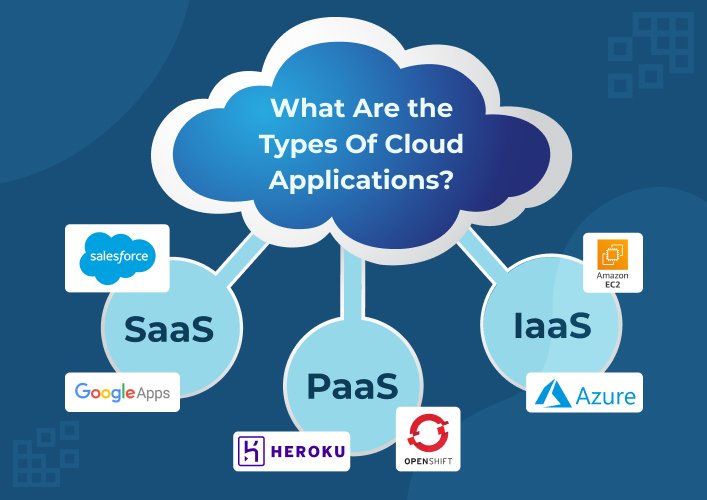What Are Cloud Applications?
- Information may be temporarily stored on a user’s device in the cloud so that it can be accessed even when the user is not connected to the internet. When the user reconnects to the internet, the cloud app is updated and the information created while offline is sent to the cloud storage facility.
- Any computer, tablet, or smartphone with an internet connection may be used to access a cloud-based application. As a user, you have complete control over backup frequency, as well as data optimization and encryption.
What Are the Types Of Cloud Applications?

Cloud applications make use of a number of third-party services and resources. The third-party grants permission to use its infrastructure and computing resources, either for free or for a fee. To sum up, you may make use of the facilities, services, and resources without having to worry about the management of the underlying infrastructure.
Businesses may choose from four typical cloud computing models:
- Private – One kind of cloud computing architecture is the private cloud, which is only accessible to one firm at a time.
- Public – In this only authorized devices may access the data stored there.
- Hybrid – It provides an equilibrium between public and private clouds.
- Community -It is useful in situations when several users need access to the same set of resources, such as in a large organization like a government.
Likewise, there are three cloud application development solutions available. They are:
SaaS
Customers may use SaaS without worrying about setting up or installing the software on their end. The creation of SaaS cloud applications may be utilized for CRM, database management, signing up for services, email tools, schedules and meetings, ERP, etc. Examples of SaaS applications are Salesforce, Google Apps, etc.
PaaS
Platform as a Service (PaaS) makes it possible to rent all resources and services necessary to build an application. In other words, you’ll be obtaining the necessary tools to create cloud-based apps. Examples are Heroku and Openshift.
IaaS
When a business doesn’t have any servers of its own, it might choose an IaaS. More services may be provided through IaaS, depending on your company’s requirements and the capabilities of your chosen IaaS platform. Examples of IaaS are Amazon Elastic Compute Cloud, Azure, etc.
How to develop cloud application?
The services available for creating applications in the cloud are varied. It’s best to pick a method that works well with your project’s concept in advance.
- First, you should figure out who you want to build the app for, what problems they’re having, and how much of an app they need. The next step is to consider the problems your product addresses.
- Outsourcing to the cloud for development services improves your chances of creating an effective application. An efficient business model study, app development cost calculation, and strategic project scheduling may all be obtained rapidly from a trustworthy cloud app development agency.
- Considerations including app design, tech stack, and cloud service are crucial to the success of cloud application development. The efficiency of your app is closely related to these choices. Therefore, you should consult your outsourced team to determine the best plan.
- Scrum and Agile development practices are used for cloud application development. Typically, the developing process is broken up into sprints. If in the research phase, there are no flaws, then the development would go smoothly.
- After development, testing of the application is needed. It is the crucial phase because it will help you find if any error exists in the app.
- You can launch the app after it is tested and is bug-free. The last phase of cloud application development is maintenance and upgradation. A software development team monitors the cloud application and responds promptly to any issues that arise. Furthermore, as per the changes in user needs, you need to upgrade the app periodically.
Conclusion
Businesses may gain scalability, adaptability, cost savings, and improved teamwork by using cloud applications. However, developing cloud applications that meet the needs of businesses takes forethought, research, finance, and a commitment to best practices. Furthermore, hiring a cloud application development company may help you in building a successful application at a low cost.
FAQs
Is web application and cloud application the same?
What is the cost of cloud application development?
What are 4 examples of cloud apps?
What are the challenges in cloud computing?
What are the 3 cloud application development solutions available?
Shivangi is a passionate Copywriter at Alian Software with expertise in technical copywriting. She shares information that is easy to understand regarding business, technology, and trends.